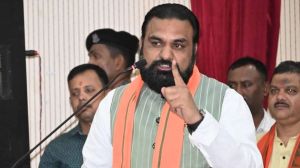Oz reconsidering on pro-migrant laws
Australia is reconsidering its seduction of skilled migrants as the jobless rate rises at home.
Australia is reconsidering its seduction of skilled migrants as the jobless rate rises at home,yet analysts see sound economic reasons to keep the flow of workers coming and even opportunity in the firing frenzy abroad.
For the tidal wave of global job shedding could be a rare opening for Australian recruiters to tap top talent and plug skill shortages that have plagued business here for years.
“There’s going to be an extraordinary pool of experienced people looking for work and a real chance for Australia to fill gaps in sectors like health and engineering which are crying out for them,” said Stephen Roberts,an economist at Nomura.
“For economists,the case for skilled migration is cast iron,but as unemployment creeps higher policy makers will surely come under pressure to cut back,and that would be a shame,” he added.
Economic success has turned Australia into a major importer of people. Eighteen years of uninterrupted economic growth has generated a serious need for labour,everything from bricklayers to brain surgeons.
And being twice as big as India but with just 2 per cent of the population,it is not short of elbow room.
Which is why Australia’s annual intake of skilled migrants has more than doubled since 2000,so that it takes more per capita than any other developed country apart from Canada.
As recently as May it announced plans to take a record 133,500 skilled migrants in the fiscal year to end June,a bold target for a country with a workforce of only 10.7 million.
The influx of newcomers met little opposition as the economy expanded strongly and the unemployment rate fell to three-decade lows of 3.9 per cent last year.
Economic Cycle Punctured
But the global recession has changed all that. The jobless rate is already up at a two-year high of 4.5 per cent and expected to hit at least 6 per cent by the end of the year,so pressure to shut the doors to foreigners can only grow.
Scenting trouble ahead,the Labour government last month said it would review its migrant intake. Immigration Minister Chris Evans said cuts would be “modest” at first,but made it clear the government was sensitive to any souring in public opinion
“There’s no doubt in my view that there’s a strong link between the economic cycle and people’s attitude towards immigration,” said Evans.
Australia has been less than open in the past.
From 1901 to around 1973,it restricted non-white immigration so much that it became known as the White Australia policy. There was a flare-up of anti-migrant feeling in the late 1990’s when the One Nation party ran on a platform of restricting Asian migrants,though it never really gained traction.
The opposition Liberal/National coalition also intends to make jobs their main line of attack this year,ensuring unemployment stays in the headlines.
Still,an outright political attack on immigration seems unlikely as the opposition is traditionally the party of business,and business is all for skilled migration.
“We think it would be very foolish to react in a knee-jerk fashion and just slash the migrant intake,” said Nathan Backhouse,manager of trade and international affairs at the Australian Chamber of Commerce and Industry (ACCI).
“Many industries are still desperate for trained workers and we will be advocating strongly that migration levels be maintained,” he said.
Going Critical
In fact,Backhouse was optimistic that the government had essentially accepted the case for continued high levels of migration,choosing instead to focus more on the skills that have been in truly short supply.
That’s because just five occupations,including cooking,accounting and hairdressing,took up half of all the visas granted in the past three years. No less than 28,800 accountants came down under,compared to only 300 sorely needed carpenters.
Now,60 occupations ranging from health care to computing,construction and engineering would be put on a new “critical skills list” to receive preferential visa treatment.
These migrants are in such demand they are either sponsored by an employer or can walk into a position right off the plane,making it hard to argue they are stealing jobs from locals.
And the talent on offer abroad should be better than ever with many of the world’s leading companies cutting staff. Even tech giants like Microsoft and Google are considering layoffs and a lot of highly educated finance professionals are going to be looking for entirely new careers.
Such migrants also tend to be well paid — adding to consumer spending,housing demand and tax receipts in Australia.
A study by consulting firm Access Economics last year estimated the 2006/07 migrant intake would benefit government finances to the tune of $535.6 million,rising to A$1.2 billion a year within a decade.
Even if unemployment rises in the short term,Australia,like many developed countries,still faces a looming shortage of workers as 4 million baby boomers are set to retire by 2025.
Australia’s working age population usually grows by around 180,000 every year,but trends already in place means growth could be just a tenth of that over the entire 2020s.
Already the average age of workers on oil rigs is 55,while that of electrical engineers in mining is 53.
“We hear endless complaints from firms about the lack of suitable labour,and that’s not going to change even if unemployment rises a couple of points,” said Rob Henderson,chief economist at nab Capital.
“The sensible thing to do is to maintain the migrant intake,we’ll just have to see if policy makers keep their nerve.”



- 01
- 02
- 03
- 04
- 05




























